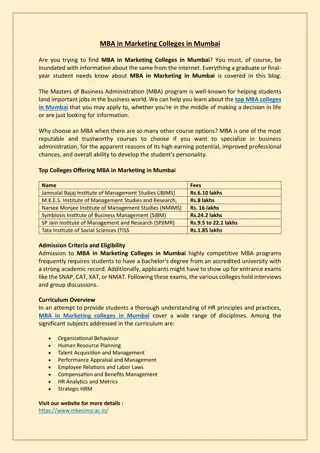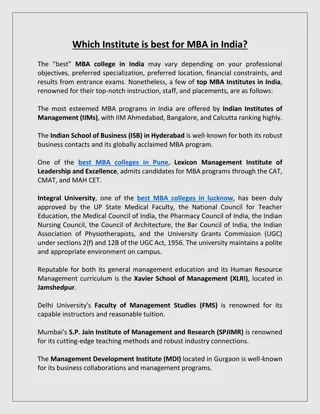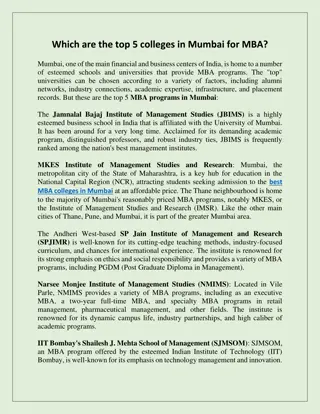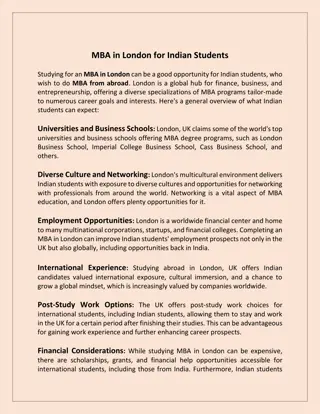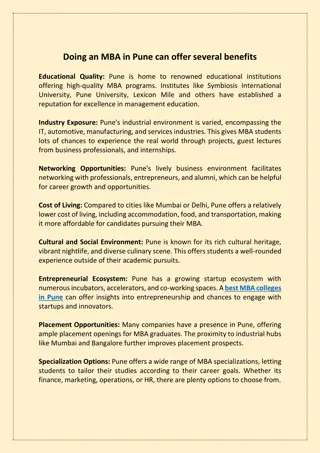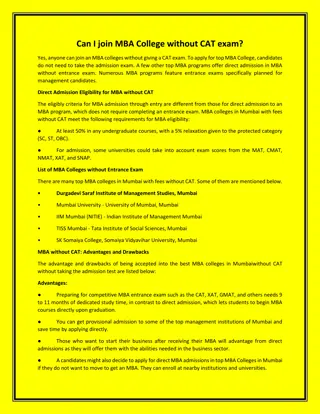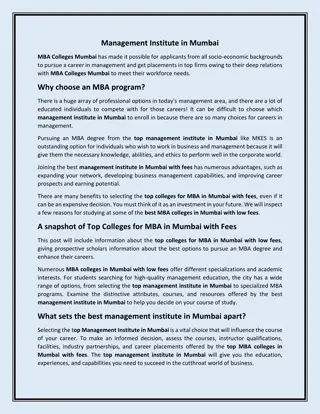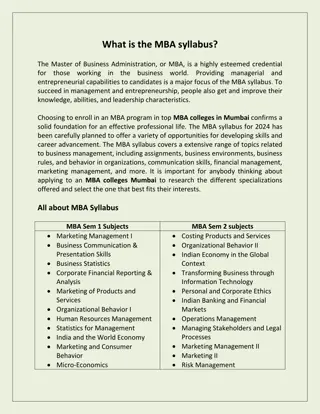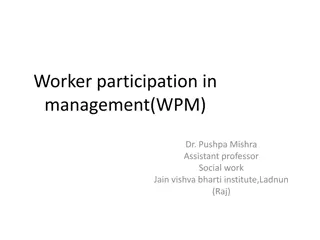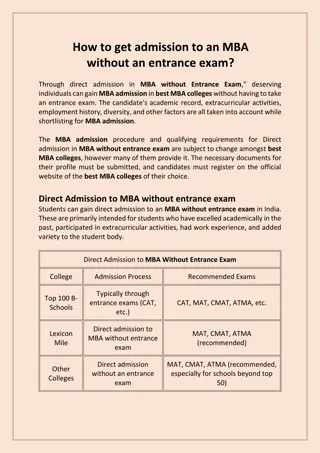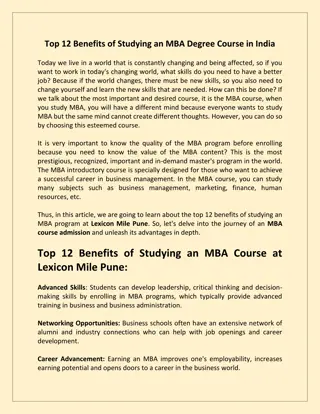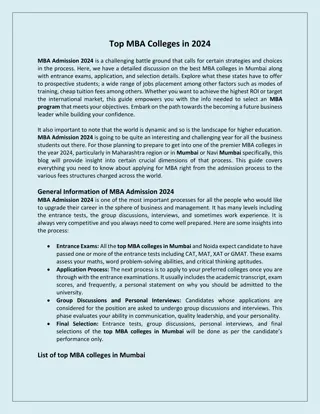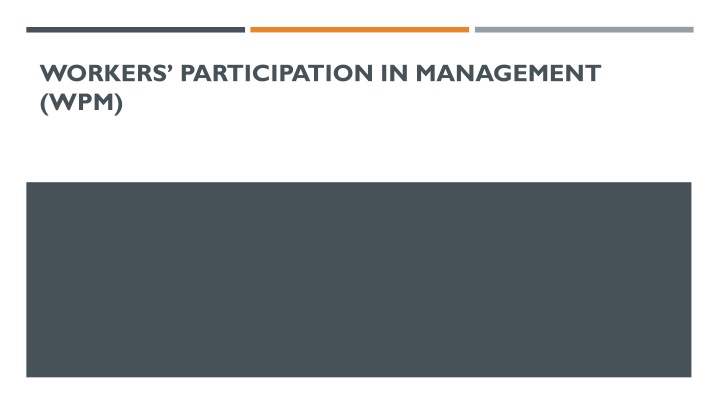
Empowering Workforce Through Workers' Participation in Management
Enhance organizational effectiveness with Workers' Participation in Management (WPM). Learn about its importance, historical background, objectives, forms, and benefits. Improve employer-employee relations, increase productivity, and foster innovation in a collaborative work environment.
Download Presentation

Please find below an Image/Link to download the presentation.
The content on the website is provided AS IS for your information and personal use only. It may not be sold, licensed, or shared on other websites without obtaining consent from the author. If you encounter any issues during the download, it is possible that the publisher has removed the file from their server.
You are allowed to download the files provided on this website for personal or commercial use, subject to the condition that they are used lawfully. All files are the property of their respective owners.
The content on the website is provided AS IS for your information and personal use only. It may not be sold, licensed, or shared on other websites without obtaining consent from the author.
E N D
Presentation Transcript
INTRODUCTION Definition of Workers Participation in Management (WPM): WPM refers to the involvement of employees in decision-making processes within an organization, allowing them to contribute to managerial functions and workplace improvements. Importance of WPM: Encourages collaboration between workers and management. Strengthens industrial democracy by giving employees a voice in decision-making. Enhances overall organizational effectiveness by utilizing employees' knowledge and experience. Historical Background: Rooted in labor movements advocating for workers rights. Adopted in various forms across industries to promote better labor relations.
OBJECTIVES OF WPM Improve Employer-Employee Relations: Builds trust and cooperation between management and workers. Reduces workplace conflicts and misunderstandings. Increase Productivity and Efficiency: Employees take ownership of their work, leading to higher efficiency. Encourages commitment and responsibility among workers. Enhance Job Satisfaction and Motivation: Provides workers with a sense of belonging and recognition. Leads to higher morale and job satisfaction. Reduce Industrial Conflicts: Acts as a conflict resolution mechanism by addressing grievances proactively. Ensures better work conditions and fair treatment.
FORMS OF WORKERS PARTICIPATION Informative Participation: Employees receive information about company policies, finances, and performance. Helps workers understand the company s goals and their role in achieving them. Consultative Participation: Workers provide suggestions and feedback but do not have decision-making power. Common in organizations with worker councils or advisory committees. Associative Participation: Employees actively discuss decisions and influence management s final decisions. Creates a partnership approach between workers and management. Administrative Participation: Employees are involved in some managerial activities such as work scheduling and process improvements. Encourages shared responsibility in operational decisions. Decisive Participation: Workers have a direct role in decision-making. Example: Employee representatives on company boards.
BENEFITS OF WPM Promotes Teamwork and Cooperation: Fosters a collaborative work environment where employees feel valued. Strengthens relationships between different organizational levels. Enhances Employee Commitment: Employees become more dedicated when they have a say in workplace matters. Leads to reduced absenteeism and lower turnover rates. Reduces Resistance to Change: Employees are more open to change when they are involved in decision-making. Helps in smooth implementation of new policies and technologies. Encourages Innovation and Problem-Solving: Employees contribute creative ideas to improve processes and efficiency. Leads to cost-saving measures and productivity enhancements. Improves Work Culture and Industrial Peace: A participatory approach leads to a positive and engaging workplace environment. Minimizes labor disputes and strikes.
CHALLENGES IN IMPLEMENTING WPM Resistance from Management: Some managers fear losing control over decision-making. Lack of willingness to share power and authority. Lack of Awareness Among Workers: Employees may not fully understand their rights and responsibilities under WPM. Training and awareness programs are needed to educate workers. Fear of Losing Control by Employers: Employers may see worker participation as a threat to their leadership. Need for a balanced approach to maintain organizational stability. Legal and Structural Constraints: Some labor laws and company policies may not support full participation. Need for legal reforms to encourage worker participation. Ineffective Communication Channels: Poor communication between management and workers can hinder participation. Establishing clear and open dialogue mechanisms is crucial.
WPM IN DIFFERENT COUNTRIES India: Works Committees and Joint Management Councils in large organizations. Board-level participation in public sector enterprises. Quality Circles in manufacturing industries to involve workers in problem-solving. Germany: Codetermination policy:Workers have representation on corporate boards. Supervisory Boards: Employees participate in key decisions at the top management level. Strong legal framework supporting WPM. Japan: Quality Circles: Employees meet regularly to discuss process improvements. Enterprise Unions: Strong worker representation within individual companies. Focus on long-term employment and participatory decision-making. USA: Employee Stock Ownership Plans (ESOPs): Employees hold shares and have voting rights in company decisions. Labor-Management Committees: Encourage worker involvement in company policies and decisions. Flexible participation models based on organizational needs.
CASE STUDIES ON WPM SUCCESS Tata Steel s Participatory Management Model (India): One of the earliest adopters of WPM in India. Established worker councils to improve cooperation and decision-making. Resulted in better industrial relations and increased efficiency. German Model of Co-Determination: Requires companies with over 500 employees to have worker representatives on their boards. Ensures workers' rights are protected in business decisions. Has led to sustainable industrial peace and economic growth. Toyota s Worker-Involvement Strategy (Japan): Uses Quality Circles and Kaizen (continuous improvement) techniques. Employees actively contribute to process enhancements and innovations. Helps maintain Toyota s global reputation for efficiency and quality.
CONCLUSION WPM as a strategy for industrial harmony. Need for effective implementation frameworks. Role of government and labor unions in promoting WPM.


